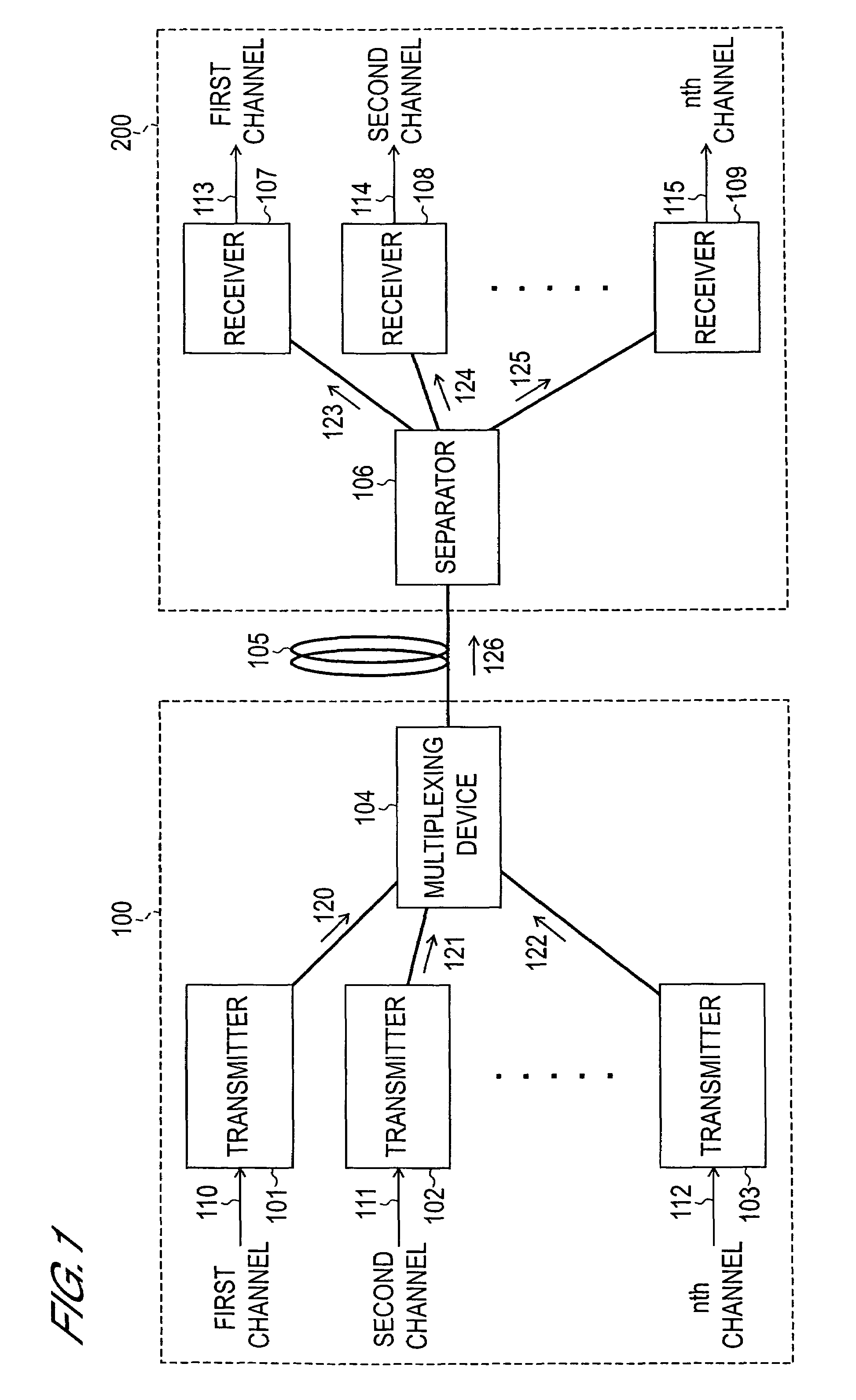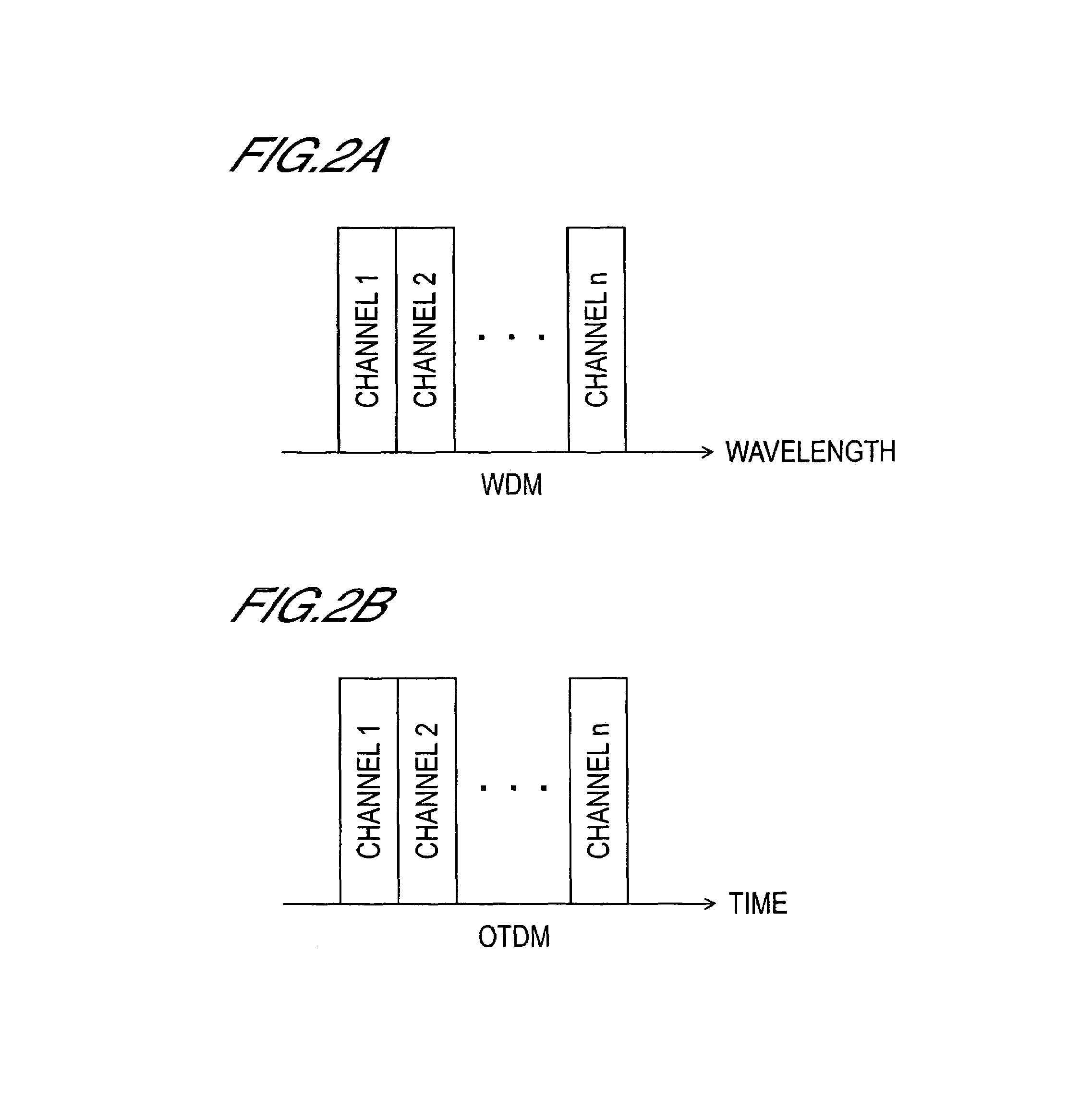Optical division multiplexing transmission and reception method and optical division multiplexing transmission and reception device
a transmission and reception method and optical division multiplexing technology, applied in the field of optical division multiplexing transmission and reception methods and optical division multiplexing transmission and reception devices, can solve problems such as inability to decod
- Summary
- Abstract
- Description
- Claims
- Application Information
AI Technical Summary
Benefits of technology
Problems solved by technology
Method used
Image
Examples
first embodiment
[0127]An optical division multiplexing transmission and reception method of the first embodiment and a device for implementing the optical division multiplexing transmission and reception method will be described with reference to FIG. 5. The optical division multiplexing transmission and reception device comprises a transmission section 500 that comprises in parallel an optical code division multiplexing signal generation section 510 and an optical wavelength division multiplexing signal generation section 530 and a reception section 600 that comprises in parallel an optical code division multiplexing signal extraction section 610 and an optical wavelength division multiplexing signal extraction section 630.
[0128]In the following description, the optical code division multiplexing signal generation section is abbreviated to the OCDM signal generation section, the optical wavelength division multiplexing signal generation section is abbreviated to the WDM signal generation section, ...
second embodiment
[0208]An optical division multiplexing transmission and reception method and a device for implementing this method of the second embodiment will be described with reference to FIG. 11. The optical division multiplexing transmission and reception device comprises a transmission section 700 that comprises in parallel an optical code division multiplexing signal generation section 710 and an optical time division multiplexing signal generation section 730, and a reception section 800 that comprises in parallel an optical code division multiplexing signal extraction section 810 and an optical time division multiplexing signal extraction section 830.
[0209]In the subsequent description, the optical time division multiplexing signal generation section is also abbreviated as OTDM signal generation section and the optical time division multiplexing signal extraction section is also abbreviated as the OTDM signal extraction section.
[0210]The constitution of an OCDM signal generation section 7...
PUM
 Login to View More
Login to View More Abstract
Description
Claims
Application Information
 Login to View More
Login to View More - R&D
- Intellectual Property
- Life Sciences
- Materials
- Tech Scout
- Unparalleled Data Quality
- Higher Quality Content
- 60% Fewer Hallucinations
Browse by: Latest US Patents, China's latest patents, Technical Efficacy Thesaurus, Application Domain, Technology Topic, Popular Technical Reports.
© 2025 PatSnap. All rights reserved.Legal|Privacy policy|Modern Slavery Act Transparency Statement|Sitemap|About US| Contact US: help@patsnap.com



